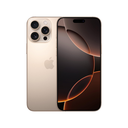MacBook Pro 16-inch (2024) – Full Specifications
Core Specifications
- Chip: Apple M4 Max
- CPU: 14-core (10 performance cores + 4 efficiency cores)
- GPU: 32-core with hardware-accelerated ray tracing
- Neural Engine: 16-core
- Memory Bandwidth: ~410 GB/s
- Unified Memory (RAM): 36 GB (non-upgradeable)
- Storage: 1 TB SSD
Display
- Size: 16.2-inch Liquid Retina XDR
- Resolution: 3456 × 2234 pixels (~254 ppi)
- Technology: Mini-LED backlight
-
Brightness:
• 1,000 nits sustained (full screen)
• Up to 1,600 nits peak HDR - Color: Wide color gamut (P3), True Tone support
- Refresh Rate: ProMotion adaptive up to 120 Hz
- Options: Standard glass or Nano-texture glass (anti-glare)
Battery & Power
- Battery: 100-watt-hour lithium-polymer
- Video playback: Up to 21 hours
- Wireless web: Up to 14 hours
- Charging: 140W USB-C Power Adapter with MagSafe 3 fast charging
Ports & Connectivity
- 3 × Thunderbolt 5 (USB-C)
- 1 × HDMI
- 1 × SDXC card slot
- 1 × 3.5 mm headphone jack
- 1 × MagSafe 3 charging port
- Wi-Fi 6E
- Bluetooth 5.3
Media & Video Support
- Hardware acceleration for H.264, HEVC, ProRes, ProRes RAW
- Two video-encode engines
- Two ProRes encode/decode engines
- AV1 decode support
Camera & Audio
- Camera: 12 MP FaceTime camera with advanced image processing
- Audio: Six-speaker sound system with force-cancelling woofers, wide stereo sound, Dolby Atmos playback
- Studio-quality three-mic array with directional beamforming
Physical Characteristics
- Color: Silver (also available in Space Black)
- Weight: ~2.1 kg (~4.8 lbs)
- Build: Aluminum unibody design
- Cooling: Advanced thermal system for sustained performance
🎯 Best fit / Ideal workloads
This configuration is strong and is made for demanding, mixed CPU + GPU work. Some of the tasks it handles very well:
-
Video editing, color grading, post-production
- Editing 4K / 6K / even 8K video with effects, plugins, LUTs, multiple video streams.
- Smooth timeline playback, less lag with effects, better rendering/export times.
- Hardware video engines (ProRes accelerators, etc.) help speed up encoding/decoding.
-
3D work, rendering, visual effects
- Using tools like Blender, Maya, Cinema 4D, or rendering engines like Redshift.
- Ray tracing, shaders, volumetric lighting will benefit from the strong GPU power.
- Better performance when working with complex scenes.
-
Software development, especially with large codebases / containers / simulations
- Compiling large projects (Xcode, etc.) will finish faster.
- Running multiple virtual machines or Docker containers.
- Possibly doing machine learning / data science work: training or inference on smaller models locally.
-
AI / Large-Language Model (LLM) experimentation
- You can run or test reasonably large models locally given enough unified memory.
- Using the GPU and Neural Engine for ML workflows, on-device inference etc.
-
Photography / Graphic design / Large RAW workflows
- Working with many high-resolution RAW photos (50-60MP), applying multiple edits, compositing.
- Using Adobe suite, Affinity, etc., with many layers and edits open.
- Better responsiveness when using filters, denoise, etc.
-
Multiple external displays + connectivity heavy work
- Because M4 Max supports more external displays at high resolution.
- Useful for trading setups, video editing + reference monitors, big dashboards.
-
Longevity / future-proofing
- If you plan to keep the laptop for 4-6 years or more, this setup gives headroom.
- As software and tools get more demanding, you’ll be less likely to “max it out”.
| Brand | APPLE |
| Processor | M4 MAX CHIP |
| RAM | 36GB |
| RAM | 1TB |
| Graphic | APPLE INTEGRATED GRAPHICS |
| Display | 16.2" LIQUID RETINA XDR |
| Garancia | 12 MUAJ |
| Gjendja | NEW |






